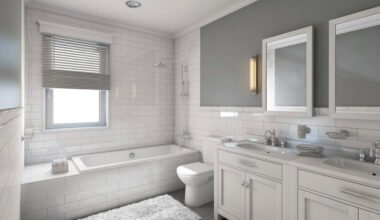Unlocking the hidden potential beneath your home is more than just a renovation—it’s an investment in comfort and property value. When carefully finished, a basement can become an expansive family space, a dedicated home office, or a private guest retreat. Whether you envision a cozy media sanctuary or an inspiring workspace, working with an experienced basement finishing company in Arlington, VA, can help ensure your project is seamless and rewarding.
Finishing your basement is also about planning, protecting your investment, and creating a safe, welcoming environment. Each step, from the initial inspection to the final decorative touches, plays a crucial role. By following a clear approach, your basement can become one of the most functional rooms in your house—and a significant selling point should you ever move.
Before you start picking out paint colors or furnishings, it’s essential to understand the nuances of a successful basement remodel. This guide outlines everything from evaluating your space’s integrity to adding those perfect finishing details, equipping you with the information to make confident, cost-effective decisions.
Basement finishing is not only about increasing square footage; it’s an opportunity to solve common structural and comfort issues, such as excess moisture or insufficient insulation. When these elements are addressed upfront, your finished basement becomes a true extension of your main living area, filled with light, warmth, and personality.
Assessing Your Basement’s Potential
- Structural Integrity:Begin by thoroughly inspecting for cracks, leaks, and other signs of water damage. Early intervention prevents recurring problems—something many homeowners only discover after costly repairs. For more about recognizing and resolving these issues.
- Ceiling Height:Measure your basement’s ceiling to ensure it meets local code requirements, typically a minimum of 7 feet. Inadequate height may require significant adjustments and could impact how you use the space.
- Natural Light:Assess the number and size of your basement windows. If possible, upgrade or add egress windows to maximize light and to meet emergency escape requirements—vital for both safety and ambiance.
Planning and Design
- Define the Purpose:Do you want a family movie room, home gym, or an in-law suite? Establish your goals at the outset to streamline decisions and align your design with your lifestyle needs.
- Layout Design:Draft a floor plan that efficiently organizes the living, utility, and storage zones. Rooms like bathrooms or laundry areas benefit from close proximity to existing plumbing to minimize costs.
- Budgeting:Prepare a thorough budget that factors in all elements—materials, contractor fees, permits, and a 10–15% reserve for the unexpected. Detailed estimates keep your project within financial reach.
Obtaining Necessary Permits
Before starting demolition or construction, obtain all required permits from your local government. Permit requirements ensure your build complies with current safety codes, such as electrical, plumbing, and egress regulations. Not only is this critical for safety, but it also avoids legal or resale complications down the line.
Addressing Moisture and Insulation
- Waterproofing:Apply foundation sealants to exterior and interior walls, and consider a sump pump if water intrusion is a risk. French drains and vapor barriers may be advisable in high-water-table regions, adding an extra layer of protection.
- Insulation:Choose closed-cell foam or rigid board insulation to resist moisture and regulate basement temperature year-round. High-quality insulation boosts energy efficiency and keeps the space comfortable, even in extreme weather. According to the S. Department of Energy, selecting the right type of insulation can make a significant difference in maintaining consistent indoor temperatures and reducing energy costs. Proper insulation not only protects your basement from dampness but also enhances the overall durability of your home. Investing in quality insulation is a smart step toward long-term comfort and savings.
Electrical and Plumbing Considerations
Thoughtful planning for electrical outlets, lighting, and plumbing locations simplifies both construction and future enjoyment. Always engage qualified electricians and plumbers to guarantee installations are code-compliant and safe. Improper wiring or plumbing can turn into serious hazards, so professional oversight is essential for peace of mind.
Finishing Touches
- Drywall and Flooring:Opt for mold- and water-resistant drywall, especially in areas prone to dampness. For flooring, vinyl planks, ceramic tile, or engineered wood offer durability and style without risking moisture-related issues common with traditional carpeting or hardwood.
- Lighting:Mix recessed ceiling fixtures, wall sconces, and task lighting to brighten the space and create zones within your basement. Adjustable, layered lighting adapts to every activity, from movie nights to work calls.
- Ventilation:Mechanical ventilation, dehumidifiers, or extending HVAC systems into the basement keep air fresh and inhibit mold growth, ensuring year-round comfort.
Furnishing and Decor
Let the intended use of your finished basement guide your decor choices. Plush sofas and blackout curtains suit a home theater, while ergonomic desks and ample shelving fit a productive home office vibe. Rugs, artwork, and live plants introduce warmth and personality, tying your new living space into the rest of your home.
Conclusion
A well-finished basement transforms your home, extending both its living space and overall value. By approaching the project with preparation and care—from inspections and permits to insulation and final decor—you ensure your basement becomes a beloved, lasting asset. Every detail, handled with thoughtfulness, brings you closer to a beautiful, functional extension of your lifestyle.



